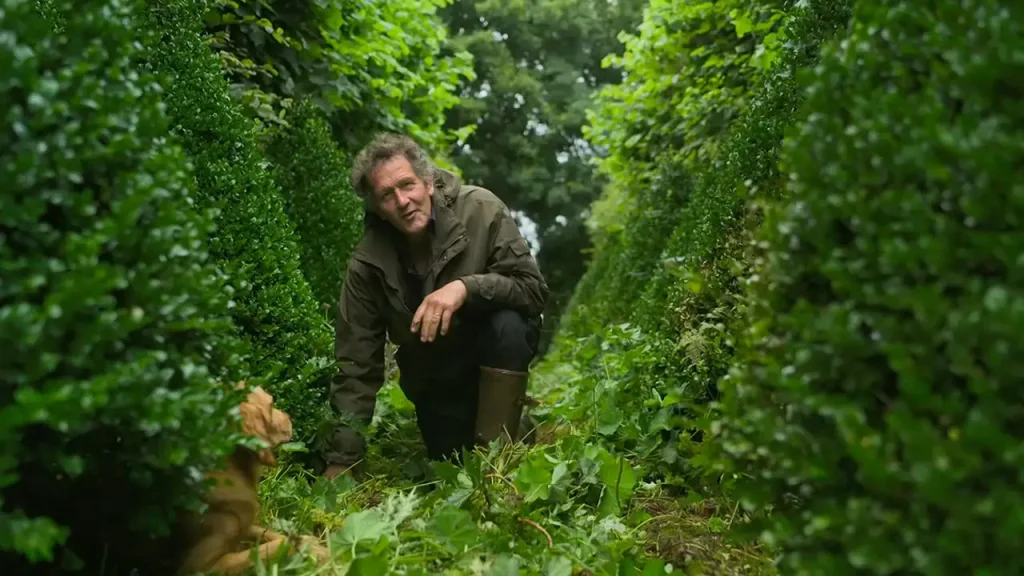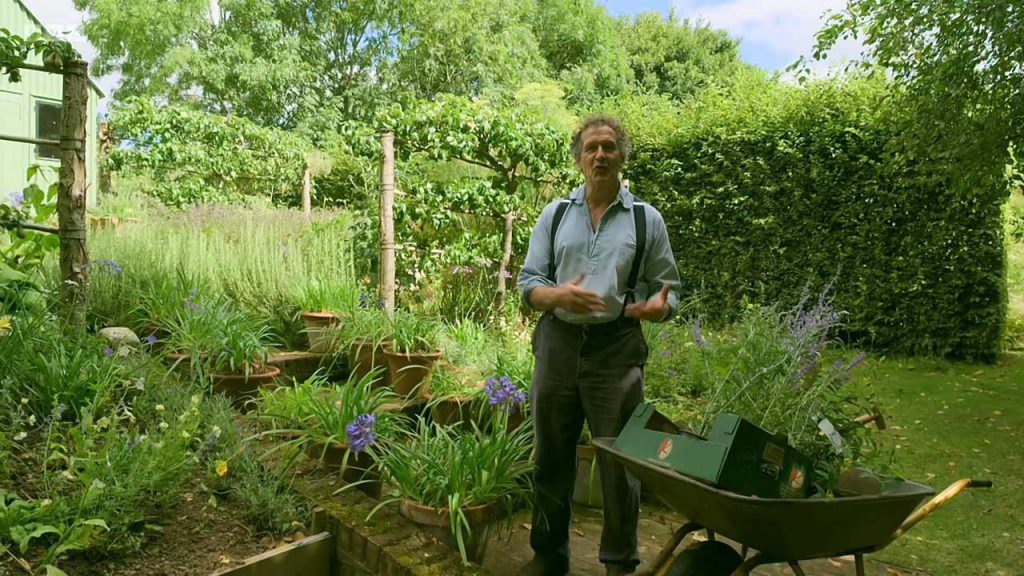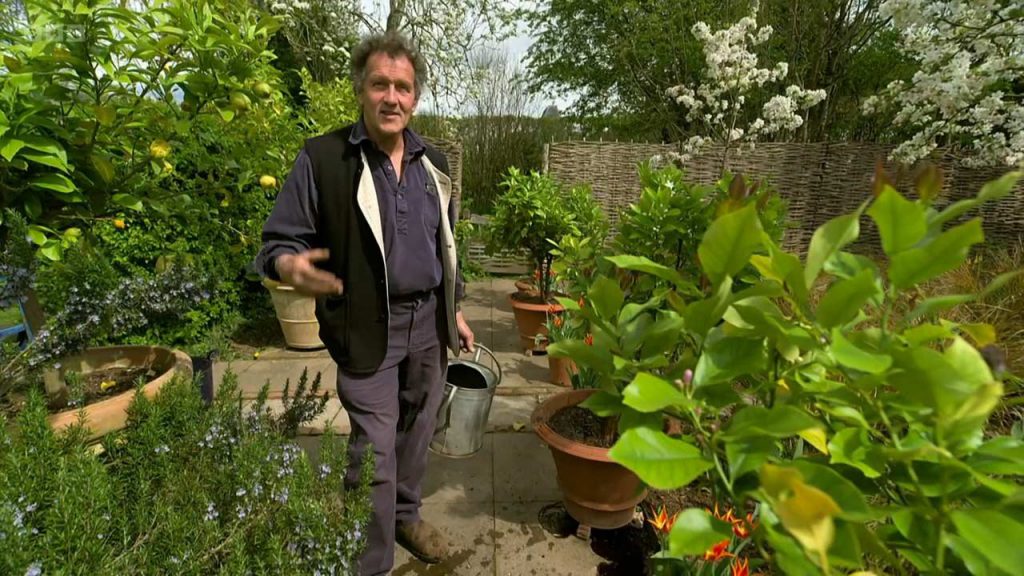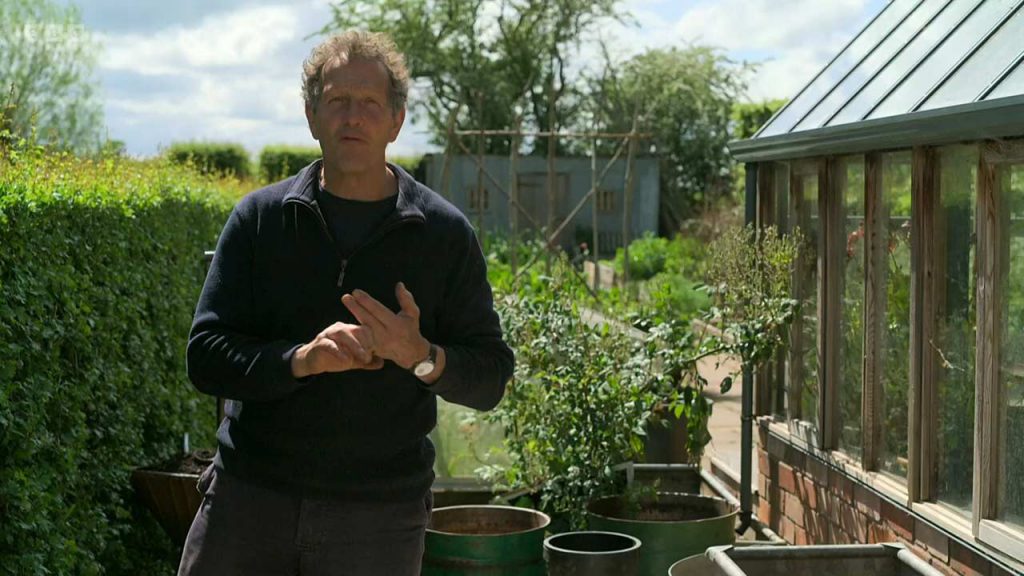Gardeners World 2023 episode 21 – In this week’s captivating episode, Monty Don embarks on a delightful journey of ensuring the Wildlife Garden is a haven for our invaluable pollinators. With a heart full of care for Mother Nature, he meticulously plants flora that invites and nourishes these tiny creatures. Not stopping there, Monty then pivots to the artful task of sculpting his box topiary cones, lending an exquisite touch to their already majestic forms. Eager to share propagation techniques, he dives into the world of succulents, demonstrating how to cultivate new plants from leaf cuttings. And, as summer reaches its zenith, the bountiful rewards of his vegetable garden are ready for harvest, symbolizing the fruitful culmination of seasons of labor.
Meanwhile, Carol Klein embarks on a garden expedition, discovering the mesmerizing beauty of Italian-inspired gardens nestled in the picturesque backdrop of Gloucestershire. These gardens, with their meticulously designed layouts and intricate aesthetics, are a testament to the timeless appeal of Italian horticultural artistry.
As we traverse the lush landscapes, we are introduced to Rekha Mistry. With a heart full of enthusiasm and a garden in the scenic Peak District, she pulls back the curtain on her horticultural journey, celebrating her victories and candidly sharing the unforeseen challenges she’s faced in her new garden, reminding us all that gardening is as much about resilience as it is about beauty.
Further along, we meet a passionate couple whose love story extends beyond each other and encompasses the ethereal world of moths and butterflies. Their garden, a living canvas, has been designed and cultivated with unwavering dedication to these fluttering wonders, ensuring it remains a sanctuary for these delicate creatures.
Lastly, we journey to the heart of London, uncovering a unique shared garden. This communal space, cherished by multiple property owners, has been thoughtfully divided, ensuring it caters to the diverse needs and preferences of every resident. It stands as a testament to the magic that can be created when a community comes together with a shared vision and purpose.
Gardeners World 2023 episode 21
Embracing Nature’s Gifts in the Wildlife Garden
In this week’s inspiring episode, revered gardening expert Monty Don reminds us of the profound importance of nurturing the delicate ecological balance in our outdoor spaces. With steadfast care and devotion, Monty transforms his already resplendent Wildlife Garden into an even more dazzling oasis for our invaluable pollinators.
Armed with an array of vivid flowering plants known to entice bees, butterflies, and other tiny winged marvels, Monty embarks on the heartwarming endeavor of ensuring his garden remains a thriving sanctuary for these creatures so fundamental to nature’s intricate web. As he tucks each new plant into the soil, visions of jeweled wings fluttering amongst the blossoms fill his mind, reaffirming that every effort to invite and sustain pollinators is acontribution towards preserving the intrinsic harmony between man and nature.
And Monty’s ecological ethos extends beyond his plant selections. With equal parts artistry and ecological awareness, he prunes his magnificent box topiaries into ornate cone shapes, crafting a stunning visual feature that also serves as a sheltered haven for birds and beneficial insects. He then turns his attention to propagating succulents, demonstrating sustainable horticultural practices by rooting new plants from leaf cuttings. Monty’s compassionate connection with every dimension of the natural world is a poignant reminder that mindful gardening transcends aesthetics alone.
As he surveys his thriving oasis, no detail has been overlooked. The Wildlife Garden stands as a testament to Monty’s vision of total integration with the natural world. And through his guidance, we are inspired to cultivate our own gardens where sustainability and beauty reach complete harmony.
The Timeless Allure of Italian Garden Design
This week, effervescent gardening aficionado Carol Klein indulges her passion for Italian horticultural artistry, embarking on a tour of ravishing gardens in Gloucestershire inspired by traditional Italian designs. As she strolls along meticulously clipped hedges, past elegant statuary and fountains, and over pavements patterned with geometric precision, the sheer splendor transports Carol halfway across Europe to the countryside gardens of Tuscany, echoing hundreds of years of exquisite Italian style.
Yet while Italian garden design principles possess an enduring, transcendent appeal, their success lies in adaptation to local landscapes. And the gardens Carol visits have been artfully crafted to complement the lush Gloucestershire countryside. Each stone wall, parterre, and precisely trimmed hedge has been planned with meticulous care to harmonize with the surrounding hills and vistas. The result is a breathtaking synthesis of formality and natural beauty.
As she pauses to admire a neatly pleached lime tree allee, Carol is visibly reminded of long, dappled walkways she discovered in Italian villas, with their ability to create a sense of magic and discovery. Yet in lieu of ancient stone pines, the branches here arc over beds of typically English herbs and flowers. The fusion of styles speaks to the universal principles that allow quintessential Italian gardens to feel completely at home amidst English rural charm.
Carol’s admiration for this harmonious marriage is palpable, reigniting her passion for Italian horticulture while underscoring the notion that adherence to sound design fundamentals allows gardeners across the globe to evoke exotic landscapes, wherever they may dwell. Her journey culminates in a spark of inspiration for us all – that with patience and vision, we too can infuse our personal Edens with a touch of Italian splendor.
Triumphs and Challenges in the Peak District Garden
The natural splendor of England’s Peak District provides a breathtaking backdrop for gardening enthusiast Rekha Mistry’s newest horticultural endeavor. Nestled within the dramatic limestone dales and sweeping moorland vistas, Rekha embodies infectious enthusiasm as she plunges into cultivating her new garden paradise. But beneath her cheery optimism lies a candid revelation – that gardening in the Peak District poses unique challenges requiring fortitude and adaptability.
The moody weather of the Peaks, with bitter winds and dramatic temperature variances, means many familiar plants fail to thrive. Rekha has embraced these challenges as an opportunity to discover sturdy native species, including hardy ferns and alpine flowers, which lend her garden a mystical wildness echoing the untamed landscapes beyond.
Her experimental spirit has unearthed nature’s hidden gifts. Lingering spring frosts require strategic planning of sowing times, but reveal delightful early bloomers like crocuses and compact daffodil breeds. And the Peaks’ acidic soil has led Rekha to incorporate limestone gravel beds nourishing specialist alpines and dwarf bulbs. Each challenge overcome has expanded Rekha’s horticultural knowledge and allowed her garden’s unique personality to shine through.
Beyond climate and soil, Rekha has faced challenges of layout and aesthetics, with the garden lacking defined spaces upon her arrival. But with resilient creativity, she has welcomed these challenges in crafting her own vision, using stone walls and artful plantings to carve intimate garden rooms from the rambling plot. Her Peak District garden has quickly become a paradise, but not without overcoming the unique trials of gardening in such dramatic terrain. Rekha’s triumphs inspire us to approach the challenges in our own gardens with equal parts patience, flexibility, and trust in nature’s guidance.
A Garden Sanctuary for Moths and Butterflies
This week we discover a garden cultivated with immense devotion to nurturing some of nature’s most delicate winged beauties – moths and butterflies. The garden’s visionary creators have designed a richly rewarding habitat encouraging these ethereal creatures to dwell, feed, and reproduce. Flowering plants have been selected specifically to entice and sustain moths and butterflies throughout their life cycles. Swaths of Buddleia, potentilla, and other butterfly bushes provide nectar-rich blooms to nourish adults, while host plants like nettles and holly provide essential egg-laying and caterpillar feeding sites.
Nocturnal moths have an entire landscape after dusk – night phlox and evening primrose unfurl their pale blooms beneath the moonlight, releasing their magical scents alongside illumination to guide moths to their sugary rewards. And shady, secluded corners become daytime shelters where moths can rest undisturbed beneath leaf litter. Every detail has been carefully curated to make this garden a fully immersive habitat and protective refuge for both fluttering butterflies and their more mysterious winged cousins.
As we witness moths of all sizes emerge at twilight while vibrant swallowtail butterflies dance above sun-drenched beds, this garden’s purpose becomes clear. It stands as a shining example of “gardening for all”; by tending to the tiniest creatures, we ultimately uplift entire ecosystems. And we are reminded that even the smallest garden has the potential to become a profound sanctuary for the beings that bring immeasurable wonder into our lives.
In the heart of urban London, an innovative shared garden Space brings together neighbors from diverse walks of life who may never have crossed paths had it not been for this communal oasis. By collectively cultivating a space carved into thirds, residents have discovered the joy of coming together around a shared passion while still catering to their individual preferences. One plot features neatly regimented raised vegetable beds primed to feed a family. Another houses a cutting garden with artistic flower plots in vibrant colors. The third is a playful cottage garden where quirky garden ornaments peek out from informal plantings.
Yet for all their distinct personalities, the gardens exist in harmony thanks to the communal work of planning, decision-making, and upkeep. Regular garden workdays have allowed friendships to bloom across fences. Children enthusiastically dig up potatoes alongside elders sharing wisdom. And casual chats over tea in the communal shed often sparks someone to share extra seedlings or divide overflowing perennials to fill bare spots for a neighbor.
In this shared oasis, the fruits of communal effort are savored by all. Beyond growing food and flowers, this garden nourishes human connections. Its existence relies on the vision that by coming together, we transcend our differences. And the joy each person derives from the space is magnified by knowing their garden also brings others happiness. Despite providing individually customized spaces, this tripartite garden succeeds most as a whole.
Conclusion
This week’s gardeners have shown us the immense fulfillment that arises when horticulture harmonizes with clear visions and mindful purposes. Whether providing for local ecologies, making terroir-appropriate design choices, overcoming uniquely local challenges, or forging community connections, their successes illuminate the profound rewards of gardening holistically and contextually. Monty’s Wildlife Garden demonstrates designing for ecological integration. Carol discovers the place-appropriate synthesis of universal garden design principles. Rekha adapts to the challenges and gifts of her Peak District home. And a shared garden fosters human community. These gardeners find joy by looking outwards and gardening with intention, reminding us to let purpose and place guide our hands as we shape our green spaces. When our gardens answer needs beyond our own, we become conduits of sustenance for people, pollinators, and ecosystems alike.
Frequently Asked Questions
What is Monty Don’s favorite gardening book?
Monty Don has stated that his favorite gardening book is “The Education of a Gardener” by Russell Page. He admires Page’s poetic writing style and philosophical insights into the garden design process.
What are some of Carol Klein’s favorite Italian gardens?
Some of Carol Klein’s favorite Italian gardens include Ninfa, Tivoli, and Villa Gamberaia. She admires Italian gardens for their elegance, precision, and seamless integration of architecture, plants, and ornamentation. She finds them to be magical, inspiring spaces.
What are some of Rekha Mistry’s tips for gardening in the Peak District?
Rekha Mistry recommends using alpine plants that can handle harsh weather, planting native species suited to the soil and climate, and utilizing hardscaping like stone walls as windbreaks. She also suggests embracing the challenges as learning experiences.
What are some of the best flowers for attracting moths and butterflies?
Top flowers for moths and butterflies include lavender, verbena, asters, daisies, foxglove, echinacea, cosmos, and any plants with dense clusters of nectar-rich blooms. Providing sequenced plantings will support them through all life stages.
What are some of the benefits of having a shared garden?
Benefits include building community connections, sharing wisdom and resources, exposing one another to new gardening techniques, and improving access to fresh food and garden space. Shared gardens foster friendships, environmental awareness, and communal pride.




